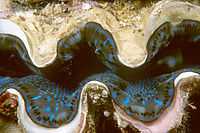Funding

Funding provides resources to a research or exploratory project so that a person, business, or any other private or public institution, may successfully accomplish the objectives of the project.
A request for funding is an attempt at fundraising.
The resources provided can be income, computing time and access, libraries and databases, or specific facilities such as observatory time or use of laboratory equipment.
Research funding
Research funding is often in the form of donations or grants.
Risks
The higher the risk (lower the probability) of success, the closer to a gift the resource becomes.
The lower the risk (higher the probability) of success, the closer to an investment or loan usually with interest, the resource is.
Foundations
In between these two extremes is funding provided by a foundation where some reasonable likelihood of success can be demonstrated usually on the basis of past achievement or credentials.
Justification
Obtaining funding (income to cover research costs) is important because research takes a toll on time, energy, and resources.
Public funding
Original research may not lead to profit-making yet may be valuable in its contribution to society. The results of the research or exploration that contribute to the better good of society should be made available for the public good and funded accordingly.
United States of America funding
The United States of America (USA) participates in public funding through nearly all of the division of the executive branch.
"The [US] federal government has mandated that all federal government grant-making agencies use Grants.gov as their primary way of receiving grant applications."[1]
Defense Advanced Research Projects Agency
The USA Defense Advanced Research Projects Agency (DARPA) participates in public fund for those research and original research efforts that may benefit national defense. DARPA also goes through grants.gov.
Geological Survey
The United States Geological Survey goes through grants.gov.
National Aeronautics and Space Administration (NASA)
NASA also requires potential proposers to be registered with NSPIRES.
National Endowment for the Humanities
The USA National Endowment for the Humanites (NEH) encourages research and writing in all areas of the humanities, including the study of history, literature, philosophy, religion, and foreign cultures. Through grants to individual scholars and institutions, the division fosters work that enables Americans to understand the world.
"All applicants to National Endowment for the Humanities are required to use Grants.gov."[1]
National Institutes of Health
NIH also uses grants.gov.
National Science Foundation
NSF requires potential proposers to be registered with fastlane; but, apparently is still not participating in the use of grants.gov.
Research
Hypothesis:
- The higher the risk of success the more the funding needed is closest to a grant with no strings attached.
- The lower the risk of success the more the funding needed is closest to a loan.
Control groups

The findings demonstrate a statistically systematic change from the status quo or the control group.
“In the design of experiments, treatments [or special properties or characteristics] are applied to [or observed in] experimental units in the treatment group(s).[2] In comparative experiments, members of the complementary group, the control group, receive either no treatment or a standard treatment.[3]"[4]
Proof of concept
Def. a “short and/or incomplete realization of a certain method or idea to demonstrate its feasibility"[5] is called a proof of concept.
Def. evidence that demonstrates that a concept is possible is called proof of concept.
The proof-of-concept structure consists of
- background,
- procedures,
- findings, and
- interpretation.[6]
See also
References
- 1 2 NEH (April 22, 2013). "Frequently Asked Questions about NEH on Grantsdotgov". 1100 Pennsylvania Ave., NW, Washington, D.C. 20506: National Endowment for the Humanities. Retrieved 2013-04-22.
- ↑ Klaus Hinkelmann, Oscar Kempthorne (2008). Design and Analysis of Experiments, Volume I: Introduction to Experimental Design (2nd ed.). Wiley. ISBN 978-0-471-72756-9. http://books.google.com/?id=T3wWj2kVYZgC&printsec=frontcover.
- ↑ R. A. Bailey (2008). Design of comparative experiments. Cambridge University Press. ISBN 978-0-521-68357-9. http://www.cambridge.org/uk/catalogue/catalogue.asp?isbn=9780521683579.
- ↑ "Treatment and control groups, In: Wikipedia". San Francisco, California: Wikimedia Foundation, Inc. May 18, 2012. Retrieved 2012-05-31.
- ↑ "proof of concept, In: Wiktionary". San Francisco, California: Wikimedia Foundation, Inc. November 10, 2012. Retrieved 2013-01-13.
- ↑ Ginger Lehrman and Ian B Hogue, Sarah Palmer, Cheryl Jennings, Celsa A Spina, Ann Wiegand, Alan L Landay, Robert W Coombs, Douglas D Richman, John W Mellors, John M Coffin, Ronald J Bosch, David M Margolis (August 13, 2005). "Depletion of latent HIV-1 infection in vivo: a proof-of-concept study". Lancet 366 (9485): 549-55. doi:10.1016/S0140-6736(05)67098-5. http://www.ncbi.nlm.nih.gov/pmc/articles/PMC1894952/. Retrieved 2012-05-09.
External links
- African Journals Online
- Bing Advanced search
- GenomeNet KEGG database
- Google Books
- Google scholar Advanced Scholar Search
- Home - Gene - NCBI
- International Astronomical Union
- JSTOR
- Lycos search
- NASA/IPAC Extragalactic Database - NED
- NASA's National Space Science Data Center
- NCBI All Databases Search
- NCBI Site Search
- Office of Scientific & Technical Information
- PsycNET
- PubChem Public Chemical Database
- Questia - The Online Library of Books and Journals
- SAGE journals online
- The SAO/NASA Astrophysics Data System
- Scirus for scientific information only advanced search
- SIMBAD Astronomical Database
- SIMBAD Web interface, Harvard alternate
- Spacecraft Query at NASA.
- SpringerLink
- Taylor & Francis Online
- WikiDoc The Living Textbook of Medicine
- Wiley Online Library Advanced Search
- Yahoo Advanced Web Search
| |||||||||||||||||||||||||||||||||||||||||
![]() This is a research project at http://en.wikiversity.org
This is a research project at http://en.wikiversity.org
| |
Development status: this resource is experimental in nature. |
| |
Educational level: this is a research resource. |
| |
Resource type: this resource is an article. |
| |
Resource type: this resource contains a lecture or lecture notes. |
| |
Subject classification: this is an economics resource. |